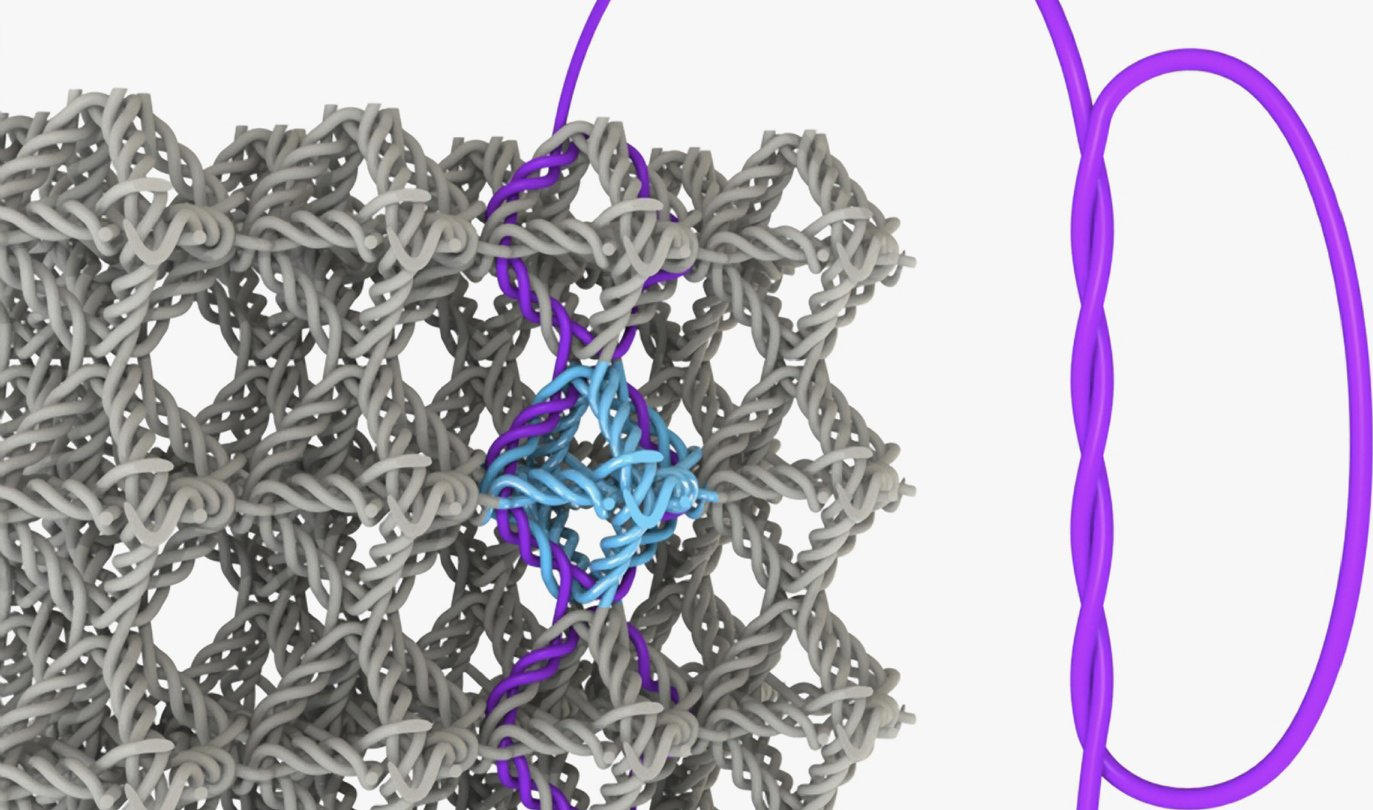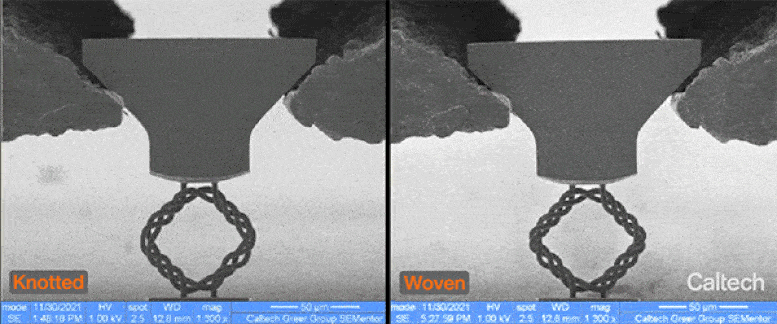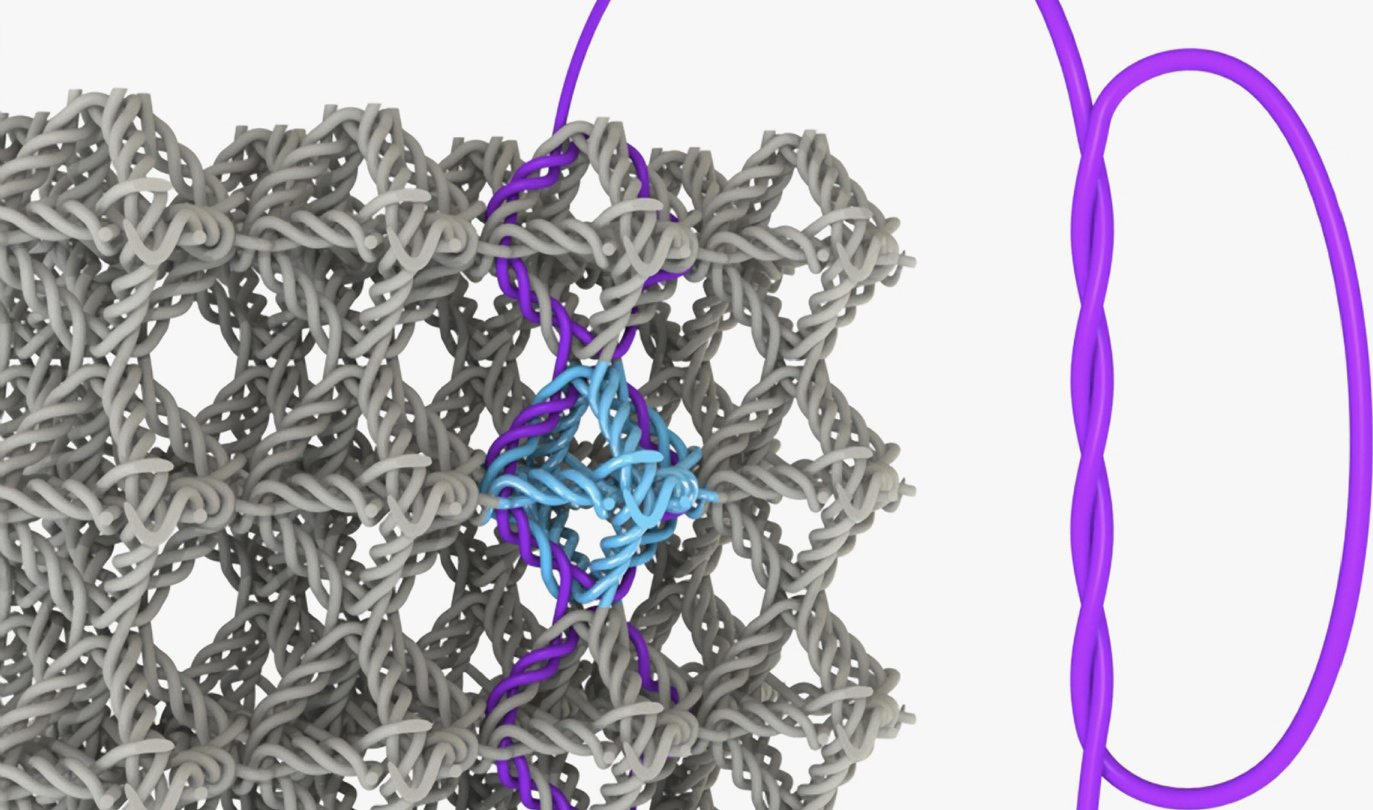
Los materiales anudados, que se han creado a partir de polímeros, muestran una resistencia a la tracción que supera con creces a los materiales sin anudar pero estructuralmente idénticos, incluidos aquellos en los que las hebras individuales están retorcidas en lugar de anudadas. Crédito: Caltech
Los ingenieros de Caltech han dado un paso importante en el campo de los materiales con nano y microarquitectura al crear un nuevo material compuesto por múltiples nodos de microescala interconectados.
En comparación con materiales que son estructuralmente idénticos pero no anudados, la presencia de nudos en este nuevo material aumenta significativamente su dureza, lo que le permite absorber más energía y deformarse más antes de volver a su forma original sin sufrir ningún daño. Estos nuevos materiales anudados pueden encontrar aplicaciones en biomedicina y en aplicaciones aeroespaciales gracias a su durabilidad, posible biocompatibilidad y extrema deformabilidad.
“La capacidad de superar el compromiso general entre la deformabilidad del material y la resistencia a la tracción [the ability to be stretched without breaking] ofrece nuevas formas de diseñar dispositivos que son extremadamente flexibles, duraderos y capaces de operar en condiciones extremas”, dice Widianto P. Moestopo, exestudiante graduado de Caltech (MS ’19, Ph.D. ’22), ahora en el Laboratorio Nacional Lawrence Livermore. Moestopo es el autor principal de un artículo sobre la[{» attribute=»»>nanoscale knots that was published on March 8 in Science Advances.
Moestopo helped develop the material in the lab of Julia R. Greer, the Ruben F. and Donna Mettler Professor of Materials Science, Mechanics and Medical Engineering; Fletcher Jones Foundation director of the Kavli Nanoscience Institute; and senior author of the Science Advances paper. Greer is at the forefront of the creation of such nano-architected materials, or materials whose structure is designed and organized at a nanometer scale and that consequently exhibit unusual, often surprising properties.

The tensile strength of a material constructed with microscale knots (left), compared to that of a material that lacks knots but is otherwise structurally identical (right). Credit: Caltech
“Embarking on understanding how the knots would affect the mechanical response of micro-architected materials was a new out-of-the-box idea,” Greer says. “We had done extensive research on studying the mechanical deformation of many other types of micro-textiles, for example, lattices and woven materials. Venturing into the world of knots allowed us to gain deeper insights into the role of friction and energy dissipation, and proved to be meaningful.”
Each knot is around 70 micrometers in height and width, and each fiber has a radius of around 1.7 micrometers (around one-hundredth the radius of a human hair). While these are not the smallest knots ever made—in 2017 chemists tied a knot made from an individual strand of atoms—this does represent the first time that a material composed of numerous knots at this scale has ever been created. Further, it demonstrates the potential value of including these nanoscale knots in a material—for example, for suturing or tethering in biomedicine.
The knotted materials, which were created out of polymers, exhibit a tensile toughness that far surpasses materials that are unknotted but otherwise structurally identical, including ones where individual strands are interwoven instead of knotted. When compared to their unknotted counterparts, the knotted materials absorb 92 percent more energy and require more than twice the amount of strain to snap when pulled.
The knots were not tied but rather manufactured in a knotted state by using advanced high-resolution 3D lithography capable of producing structures in the nanoscale. The samples detailed in the Science Advances paper contain simple knots—an overhand knot with an extra twist that provides additional friction to absorb additional energy while the material is stretched. In the future, the team plans to explore materials constructed from more complex knots.
Moestopo’s interest in knots grew out of research he was conducting in 2020 during the COVID-19 lockdowns. “I came across some works from researchers who are studying the mechanics of physical knots as opposed to knots in a purely mathematical sense. I do not consider myself a climber, a sailor, or a mathematician, but I have tied knots throughout my life, so I thought it was worth trying to insert knots into my designs,” he says.
Reference: “Knots are not for naught: Design, properties, and topology of hierarchical intertwined microarchitected materials” by Widianto P. Moestopo, Sammy Shaker, Weiting Deng and Julia R. Greer, 8 March 2023, Science Advances.
DOI: 10.1126/sciadv.ade6725
The study was funded by the National Science Foundation through Moestopo’s Graduate Research Fellowship Program, Caltech’s Clinard Innovation Fund, Greer’s Vannevar Bush Faculty Fellowship, and the Office of Naval Research.

«Maven de internet exasperantemente humilde. Comunicadora. Fanático dedicado al tocino.»
También te puede interesar
-
Dormir bien el fin de semana puede reducir en una quinta parte el riesgo de sufrir enfermedades cardíacas: estudio | Cardiopatía
-
Una nueva investigación sobre la falla megathrust indica que el próximo gran terremoto puede ser inminente
-
Caso de Mpox reportado en la cárcel del condado de Las Vegas
-
SpaceX lanzará 21 satélites Starlink en el cohete Falcon 9 desde Cabo Cañaveral – Spaceflight Now
-
SpaceX restablece el lanzamiento pospuesto de Polaris Dawn, una misión espacial comercial récord

